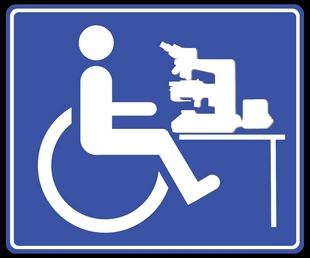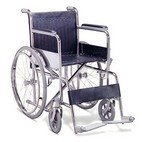Spinal Cord Injury Recovery - My Story 12 Years Post Injury
A while ago I checked the statistics relating to specific spinal cord injury topics I’ve posted and not surprisingly found that Spinal Cord Injury Recovery the most read. Not surprisingly as anyone who has experienced this life-altering injury desperately hopes that there’s a light at the end of that very dark tunnel.
Do you believe in miracles?... I don’t.
If you were told you won’t get much better and find yourself improving, I attribute that good fortune to medical misdiagnosis of the severity of your injury by your doctor.
If you are a religious person, go ahead and pray to your God---it certainly won’t hurt. But I personally don’t believe it will help. After all, where was your God when your injury occurred?
For myself, I don’t believe God had anything to do with my receiving this injury and God will probably offer the same amount of involvement in its healing.
Some more background:
So, first off---all injuries are different, not only in cause but in severity. Immediately after your injury, were you properly stabilized and moved by properly trained personnel? How quickly were you diagnosed and received appropriate medical intervention? How quickly did you receive physiotherapy to keep you limber and maximize your chance of recovery?
As my injury was due to an infection by the bacterium Staphylococcus aureus, its physical invasion and toxins produced damaged my spinal cord differently than severing, shearing, crushing or even a stroke would. Even other bacteria or viruses would have damaged differently. You see, Staph aureus produced a variety of enzymes and toxins that can inhibit the body’s response to the invasion as they damage tissue. It is my belief that many of my neurological pathways are mostly intact but modified. The enzymes action on my spinal cord were similar to a solvent being poured over a bundle of insulated wires which when denuded of insulation produce short-circuits. I can relieve the itch on the bottom of my left foot by scratching my left butt. Go figure!
I believe most doctors tell the spinal cord injury patient that what they get back in the first few months (six months) is all that they can expect to recover. (I’ve heard a number of variations on the timeline). Personally, I could not move my knees together more than an inch when discharged after six months. Movement did not improve until the eighth month when the inflammation from my infection subsided. I believe my injury would not have been so great if the inflammation could have been reduced much sooner. The body produces inflammation to swell the tissues thereby localizing the injury or abscess. However, that same inflammation may also restrict the body’s cellular defenses against the infection, constrict blood flow to the area and the physical swelling may further damage surrounding tissues.
My injury (infection) occurred at the T-5 to T-7 area.
Only after 8 months post-injury, as inflammation subsided, did motion slowly begin to return to below my waist. The downside to that is that the same pathways carry the sensory (pain) signals and I began experiencing the burning neurogenic pain. Spasms became more pronounced at that time as well.
I was lucky as my employer’s benefit package included unlimited physiotherapy of which I took full advantage. One hour sessions three times a week was recommended. I received physiotherapy in a hospital setting for two full years and then for a number of months longer at a private physiotherapy clinic. I believed that I had come as far as I was ever going to recover after some two to three years post injury.
Still, I joined a gym and utilized whatever equipment I could---about two hours at a time, twice a week for another two years in hopes of staying limber. The gym I attended began changing out equipment to models my limited motion prevented me from using. Also personal circumstances limited my attendance to the two years.
Okay---Twelve Years Post Injury:
Neurogenic burning: has been a constant companion ever since the inflammation subsided some eleven years ago. No better but no worse either. Gabapenin, Nortriptyline, Amitriptyline and Lyrica have done little if anything to reduce the pain. Perhaps they reduce the number and intensity of zapping shocks that can spontaneously occur above the steady burn. At best, the drugs may take the edge off the burning pain but if so, only by a few percent.
Spasms: Spasms cause limbs to jerk or jump rhythmically---contracting every few seconds and then relaxing---on and on, often for hours until they ran their course. I found it curious that spasms occur only in one limb at a time but can switch over to the other limb: what (shared) pathway? Analogies: Is it some sort of feedback loop caused by a ‘dripping’ neurotransmitter---where each ‘overflowing drop’ causes a spasm? Or could is it some ‘electrical spark’ where each ‘zap’ causes the spasm? Could it be a combination of the two?
What triggers spasms to start or to finally run their course and subside? They seem to come from nowhere and seem unaffected by work or rest; leg position (sitting or lying), temperature, nor any other physical condition of note. While they could occur at any time of the day, they most certainly will start in the evening. My spasms usually last no less than an hour but usually several hours at a time. The longest stretch of continuous spasms was for eight hours. Sometimes putting pressure on the limb (foot) can help eliminate the spasm---stand up if able or if sitting have your feet on the floor and lean forward.
Initially, once the spasms finished, they let me sleep in peace and did not appear again until the next day or evening. Around nine years post-injury, the frequency of spasms increased. I began experiencing spasms throughout the night, often when lying too long on one side or the other---however these spasms were short-lived meaning, unlike the long-lived spasms of the day, they usually subsided on changing position.
Nine years post injury I began to experience what I called ‘Atomic Spasms’. These spasms were so explosively violent that the one leg or the other would contract to the limit yet the muscles tried to go even further feeling as if the leg would be pulled from the hip socket. ‘Atomic Spasms’ produced excruciating pain as the body felt as it was attempting to tear itself apart. My ‘Atomic Spasms’ lasted for about a year and half or two years then disappeared. (Regular rhythmic spasms still occurred throughout this time period) I have no idea why the ‘Atomic Spasms’ began then disappeared except that they started shortly after I left the gym and perhaps there was some reaction to the cessation of strenuous exercise.
On discharge from the hospital I was placed on the maximum oral dosage of Baclofen with Valium added in an attempt to control my spasms. I continue to take the Baclofen however the Valium was discontinued early on. I feel the Baclofen has little effect on spasms if defined as the rhythmic contraction and relaxation (jerking) of a limb. What it seems to do is reduce some tightness in the limbs. I found when I attempted to wean myself off the Baclofen that my legs drew together and attempted to cross making it more difficult to separate the legs into a ‘jumping-jack’ position.
Proprioception: Defined as knowing where your limb is in space without looking at it. Proprioception was lost with the injury but slowly began to return after the eighth month post-injury, however it did take longer to come back. I feel I’ve regained most of that particular sense.
Tactile Sensitivity: I can feel both sensations of touch and temperature in my feet but they are not as quick or as intense as previous to my injury.
Movement: After my physiotherapy and the independent gym routines, I could walk short distances with a walker with a fairly normal gait. Even with physiotherapy and the gym, the muscles in the back weaken and want to give out. While I can stand and even let go of the walker, I cannot recover if I start to waver and drift to any side---front or back. I describe my sensation as trying to balance a pencil on its eraser---pointed end to the ceiling; not easy to do. I can stand if braced, reach high or bend to pick up off the floor. I can just about do anything other than walk away from my wheelchair.
Stiffness: I have an overall stiffness which seems greater than what can be accounted for neurologically. By that I mean in twisting my trunk about my waist, I feel that neurologically I can twist further but that the tissues (muscles, ligaments, etc.) are restricting the movement. If this is not a neurological deficiency then the muscles, tendons and ligaments have shortened or stiffened to limit the range of motion. Further evidence is that Baclofen has no effect on this stiffness. If this is the reason then why didn’t two years of physiotherapy and two years of independent gym activity stretch the connective tissues back to normal? Perhaps I’ve developed “contractures” which roughly is the ‘gluing’ of one layer of tissue to another so that they essentially become fused and may require surgery to be separated. The Achilles’ tendons also shortened while during my six-month hospital bed confinement. Again, physiotherapy and gym routines plus day to day standing have not returned the Achilles tendons to their normal length. While I can stand, the short Achilles point the toes downward and always want to push me backwards.
Other: body/bathroom functions are unaffected by the injury. Because I can shift and move around independently, I have no skin issues. I try to sleep on my sides or stomach to give the backside a break from pressure.
My injury weakened my left side differently than my right. As a result of a change in muscle strength, I place more pressure on the left hip. My injury resulted in sciatic nerve pain in my left hip which at times extends to my foot. A blood vessel must run near the nerve (can’t find my Gray’s Anatomy book) as the pain pulses with every heartbeat. Sciatic nerve pain is always present but intensifies to excruciating levels about once a week then subsides to a lower level of pain. Exercise and other physical techniques have not lessened this pain.
Final Thoughts: I truly feel I would have recovered further if the initial inflammation could have been reduced. Six months of hospital rehabilitation with one hour physiotherapy five days a week is insufficient in keeping affected limbs limber. Persistent movement after the initial injury is sufficiently healed would be extremely beneficial. How can one keep the Achilles tendons from retracting if there is any hope of walking again---some kind of boot keeping the tendon extended?
Once the high-priest of medicine wearing his white lab-coat vestments; a stethoscope in place of a crucifix, and pronounces you a paraplegic, there is not much real effort extended in helping you recover. Doctors don’t like to be proven wrong.
In the final analysis, my recovery is about the same as when I finished physiotherapy about two to three years post injury. Spasms, burning, stiffness and, of course paralysis remain, No other changes or improvements occurred other than the increase of spasms which now also occur during the night into early morning.
Prayers or positive attitude---use whatever means to keep motivated and keep moving. Just remember, doctors are not always right.
* * *







.jpg)



